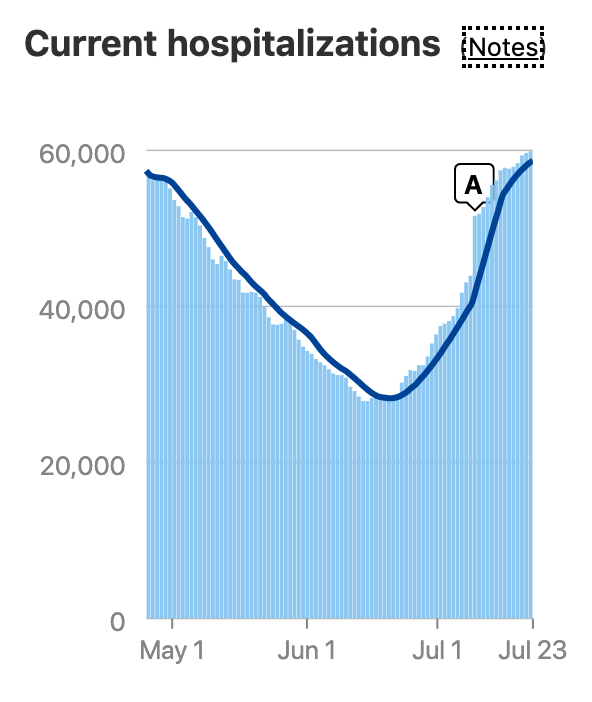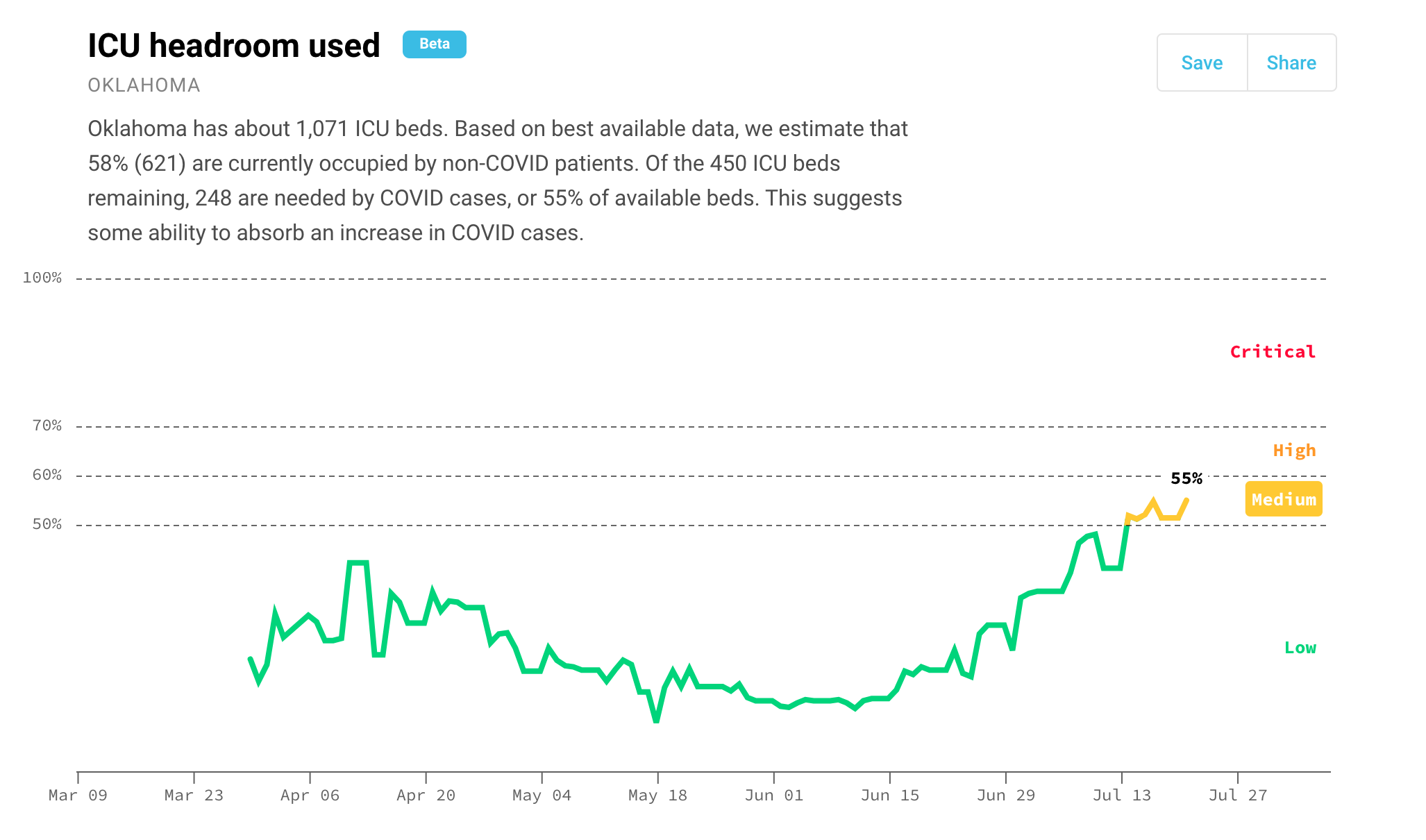The New York Times on Wednesday reported that coronavirus hospitalizations have risen dramatically and are nearing their April peak. The Times, however, either overlooked or ignored a serious factor: Way more states are reporting hospitalizations now than were reporting at the April peak.
“The rising hospitalizations reflect the scale of serious illnesses,” the Times said. “Nearly as many people are in hospitals now as there were when New York was at its worst.” The latter part is true. The Times notes that as of July 22, 59,628 people were being treated in hospitals for the Wuhan virus. During the peak of the outbreak on April 15, when New York was the nation’s hot spot, 59,940 were hospitalized for the virus. The data comes from The Atlantic’s COVID Tracking Project, which collects virus data daily from all 50 states, plus Washington, D.C., and five U.S. territories.
“[H]ospitalizations may be the clearest measure of how widely the virus is causing the most serious illnesses, and could offer a glimpse of what is ahead,” the New York Times reports.
The problem is that the article’s own source reveals that the spike in numbers can be partly attributed to the fact that Florida, the country’s third-most-populous state, began reporting hospitalizations only two weeks ago, meaning sheer hospitalization numbers are not the clearest measure of the virus’s seriousness— at least not the way the Times compares them.


A deeper dive into the data reveals Florida wasn’t the only addition to hospitalization counts. On April 15, a total of 37 states and territories were included in the near-60,000 hospitalization figure, with New York bearing the brunt of the caseload. July’s so-called spike includes data from 52 states and territories.
The New York Times even mentions Florida’s late data reporting further down in the article, but compares the apples-and-oranges data sets, mischaracterizing July’s numbers as a “surge” and a “spike.”
Comparing total hospitalizations, tracked with the gray line below, shows an apparent spike, but it’s illusory. More and more states, a quantity depicted by the orange line, have begun reporting hospitalizations, which largely flattens the alleged spike. The blue line below tracks the hospitalizations in only the states and territories included in both the April 15 peak count and the July 22 count, a more than 30 percent decrease in the number of people hospitalized for the Wuhan virus in those states. States included in the July data but absent from the April data include Florida, Georgia, Maryland, and South Carolina, among many others.

Unlike the New York nursing home massacre, enabled by Gov. Andrew Cuomo, which largely drove the April coronavirus death toll, younger people have driven the latest increase in COVID-19 hospitalizations, the New York Times reveals. Nearly 40 percent of those hospitalized for the virus this month were under 50 years old, compared to only 26 percent at the end of April, according to the Centers for Disease Control. For this demographic, the virus has proved far less lethal.
One professor of epidemiology referenced in the article surmises that the increase in cases and hospitalizations reflects “people returning to pre-pandemic behaviors, such as going to bars or gathering with friends.” The article makes no note of the mass protests and violent riots that have been sweeping the country’s cities the past two months, when hundreds of thousands of people in the under-50 crowd packed the streets.
The New York Times also claims, “In Oklahoma, hospitalizations have been on the rise since mid-June, and about 80 to 90 percent of hospital beds have been filled in recent days.”
According to realtime data from Covid Act Now, which partners with Georgetown University, Stanford University, and Grand Rounds, however, Oklahoma “can likely handle a new wave of COVID,” with only 55 percent of available beds being occupied by coronavirus patients.

These blunders from the New York Times follow another journalistic failure last week, when the paper of record hyped a South Korean study, saying it proves children ages 10 to 19 are highly infectious. The report actually revealed children are hardly spreading the coronavirus, if at all.
The struggling New York Times seems to parallel the infected. To echo one of the infectious-disease experts quoted in this week’s erroneous reporting: “Surviving doesn’t mean thriving.” It appears the same can be said of the Times.

